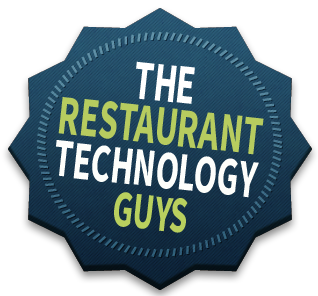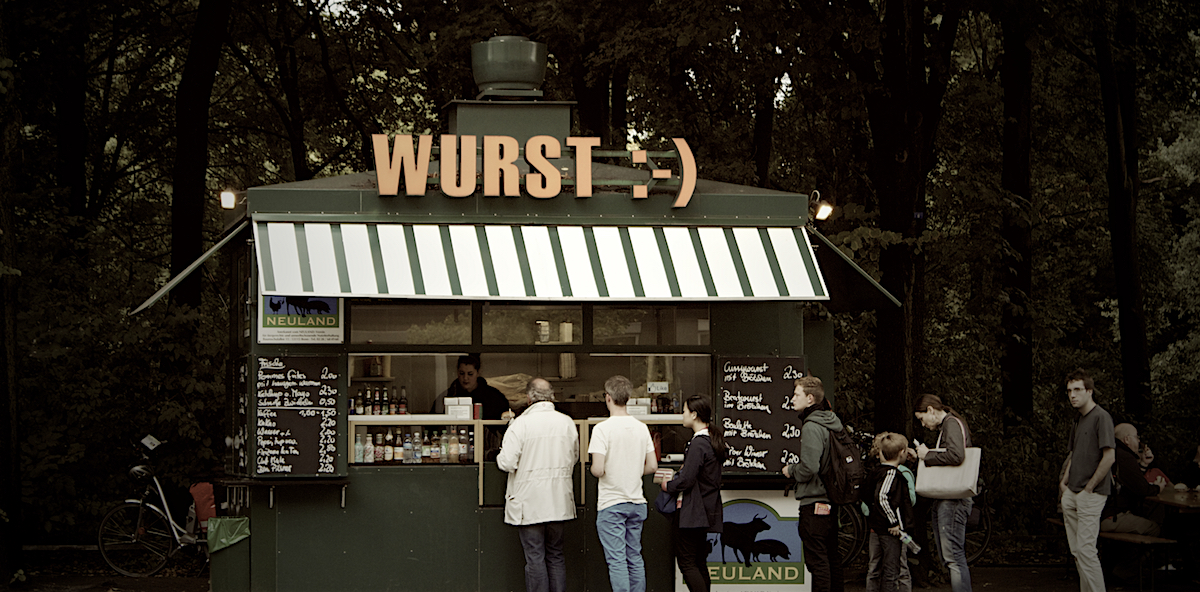 The role of Information Technology continues to expand in the restaurant industry. The ability to increase productivity, monitor and analyze data, and effectively manage operations has grown in tandem with the programs that are used to operate restaurants.
The role of Information Technology continues to expand in the restaurant industry. The ability to increase productivity, monitor and analyze data, and effectively manage operations has grown in tandem with the programs that are used to operate restaurants.
As the general public’s use for technology has spread, technology has adapted to the public’s tastes, designing and developing applications that are meant to be intuitive and easy to use. This “consumerized” technology has many notable benefits, which can make it easy to ignore their flaws.
Gartner’s IT Glossary defines the consumerization of technology like this:
“Consumerization is the specific impact that consumer-originated technologies can have on enterprises. It reflects how enterprises will be affected by, and can take advantage of, new technologies and models that originate and develop in the consumer space, rather than in the enterprise IT sector. Consumerization is not a strategy or something to be ‘adopted.’ Consumerization can be embraced and it must be dealt with, but it cannot be stopped.”
“Consumer-oriented technologies” refers to the surge of personal digital devices like smartphones and tablets in everyday life. This technology has expanded consumer power and raised their expectations for response, convenience, consistency, and customization.
In the restaurant, consumerization has contributed to the growth of Bring Your Own Device (BYOD) policies, which allow servers and staff to use their personal smartphones or tablets for on-the-job tasks like order entry. Restaurateurs should be aware of the drawbacks of these policies, and consumerized technology in general, before embracing it in their businesses.
Consumerization is one trait of our increased reliance on technology. For the restaurant industry, technological growth also includes Software as a Service (SaaS) and cloud-based computing for POS systems.
This expansion of technology has made securing data an ongoing challenge. While data breaches at large corporations like Home Depot and Target generate headlines, policies like BYOD are also at the forefront of this security issue. Allowing employees to access your restaurant’s operating systems through their own devices can make your data vulnerable to hackers.
Restaurants or franchises considering a BYOD policy will need to address the inherent security issues created by allowing employees to log on to your systems from their own (potentially unsecured) digital devices.
Expanding your restaurant’s technological capabilities can extend beyond the four walls of your building. Establishing your presence online through a responsive website, ordering app, and social media channels can build your brand and lead to increased sales and traffic.
 Joining the world of social networks – especially crowdsourced review sites like Yelp – can be as harmful as it is helpful. Too many negative reviews from customers, even if they are baseless or outright lies, can hurt your restaurant’s reputation and keep people away as much as good reviews bring them in.
Joining the world of social networks – especially crowdsourced review sites like Yelp – can be as harmful as it is helpful. Too many negative reviews from customers, even if they are baseless or outright lies, can hurt your restaurant’s reputation and keep people away as much as good reviews bring them in.
Forty-three percent of restaurants surveyed by Tundra Specialties, a restaurant equipment and supplies distributor, said that Yelp poses a problem for their business “because it basically gives customers carte blanche to say whatever they want about a restaurant. A lot of the reviews can be very damaging,” Daily Deal Media reports.
The same survey found that 41% of respondents consider Groupon to be most detrimental among restaurant-related apps because the deep discounts that “stingy customers” capitalize on through Groupon offers does not lead to increased business.
Restaurant owners and managers can respond to negative reviews on sites like Yelp through the site’s public comment forum, but responding quickly to an unhappy customer requires constantly monitoring your Yelp page – as well as your other social media sites.
Implementing consumerized technology in your restaurant requires significant upfront costs. A BYOD policy will mean outfitting your restaurant with a wireless network, improving data security and addressing device usage costs. If you would prefer to own all of the devices in your restaurant, the cost of tablets – and any proprietary menu or ordering applications to go with them – will be an issue. And this doesn’t address the cost of a new POS or other hardware upgrades.
Of course, investing in your restaurant’s operations and infrastructure will always have a cost. But you’ll also have to invest in staff and manager training, and the monthly usage and support costs necessary for a cloud-based POS or Software as a Service.
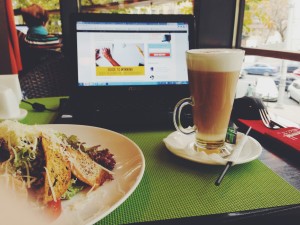 4) Overreliance on Technology
4) Overreliance on TechnologyWhile many restaurants are using consumerized technology to make communication easier and employees more productive, relying too much on these systems can become a liability.
Tech-based problems can range from a data breach, to a glitchy system that constantly requires rebooting, to a “dead” corner of your restaurant that isn’t reached by your wireless network.
You can prepare your restaurant and your team for any potential breakdowns in the system by creating a plan for operating without your digital devices. Writing orders down on a pad of paper and manually swiping credit cards may seem passé for a team used to instant communication via tablets and smartphones, but the ability to keep your restaurant open in spite of technical problems may prove to be invaluable.
This effect of consumerized technology is closely related to the overreliance discussed above. Restaurants that are quick to jump on the emerging technology train – such as those racing to put new tablets at guest tables, in the hands of servers, at the front desk and in the kitchen – need to ensure that their customers are still getting the person-to-person contact that can make a meal memorable.
Ideally, these new tech-based avenues will be used to supplement high-quality customer service, not replace it. Managers and staff need to make a concerted effort to continue providing the attention that guests expect when they visit your restaurant. Your patrons will only appreciate the cutting-edge innovations if they leave satisfied with their overall experience.
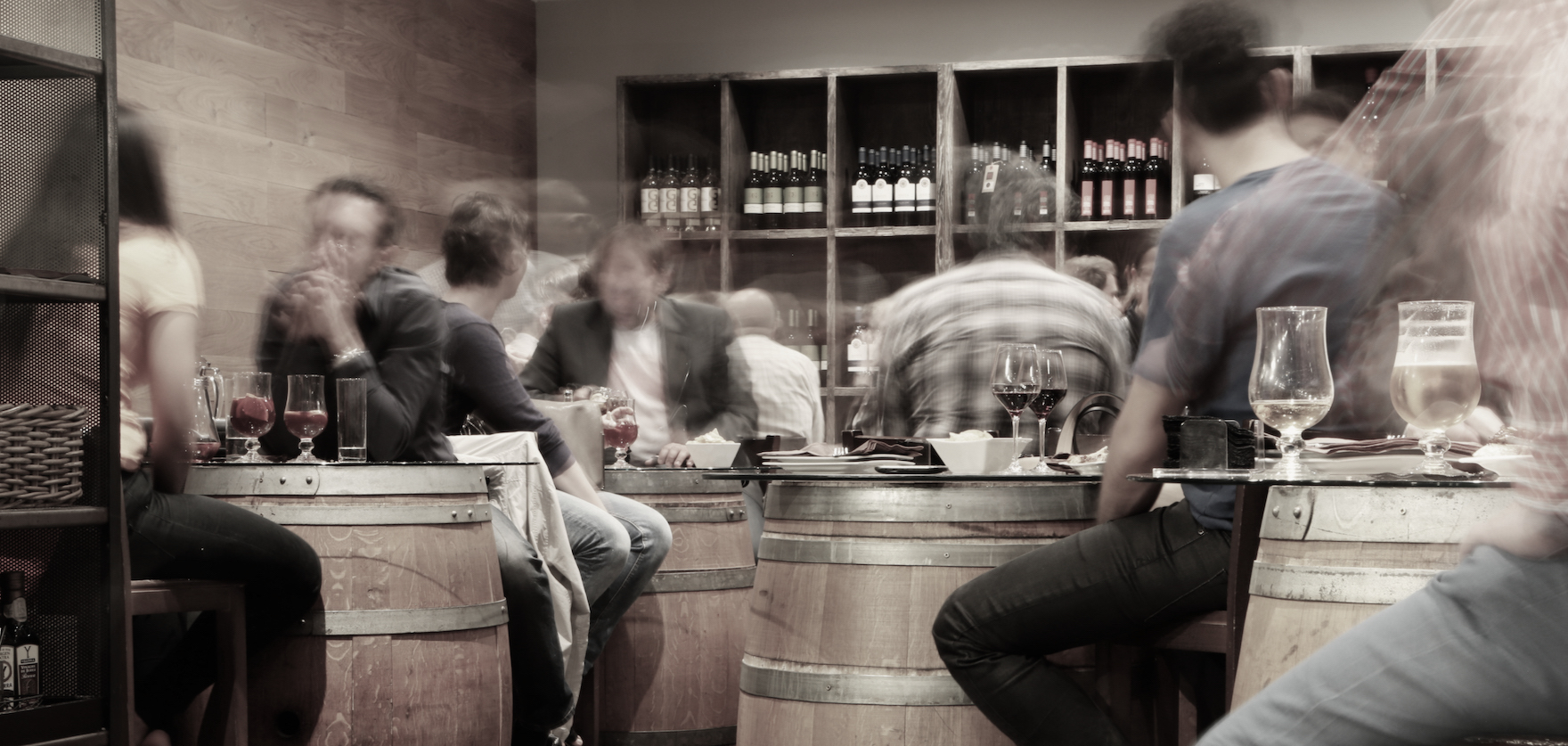 Leveraging Social Media & Customer Loyalty
Leveraging Social Media & Customer LoyaltyMore than anything else, connections bring customers back to restaurants. A connection to the food, to the atmosphere, to that table in the back where you knew that this wasn’t just another first date.
Connections between people and places have also fueled the rise of social media networks. Restaurants savvy enough to use these connections to their advantage are generating more business through methods like social media engagement and customer loyalty programs.
You want to use these connections for your restaurant too, but where do you start? The tips below provide the framework, as well as a few helpful hints, for leveraging social media & customer loyalty for your business.
The first step for restaurateurs who want to build a social media presence is to take ownership of your social media pages. This includes the major networks relevant to the restaurant industry like Yelp and Facebook, as well as other channels like Instagram, Twitter, LinkedIn, Pinterest, Google+ and YouTube. Each page should list your restaurant’s information (address, phone number, operating hours, etc.) and include some images, as well as links to your official website and your other social media platforms.
After managing these accounts for a while, you’ll probably be able to tell which social channels are the most useful for your restaurant. LinkedIn or Google+, for example, might be less effective for gaining an online following than Instagram or Yelp.
But even if you limit your social media efforts to one or two services, it’s important to “own” your pages across as many channels as possible. Controlling your pages will ensure that users who find you in online searches see consistent information, and prevent others from claiming your branding as their own.
Letting your customers know that your restaurant is active on social media, especially Yelp, can get your online campaign off to a good start. Eventually, just about everyone has to deal with negative online reviews (more on this later) and having a few positive reviews already posted will reduce the power of a negative review.
Of course, explicitly asking customers for good reviews is tacky (and paying for reviews is a huge no-no). Instead, use a program like Yelp’s “check-ins” that include an offer or discount to give customers an incentive to review your restaurant.
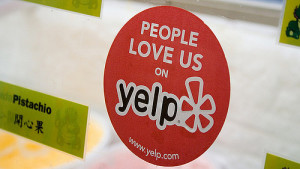
Image: John Fischer/Flickr
Finally, spend some time integrating social media icons and links with your current branding. Announcing offers through Yelp or Facebook will encourage traffic to your social sites and help to build your following. If your efforts pay off, you might get to add one of those “People Love Us On Yelp” stickers to your front door.
Customer reward programs designed around apps or web-based platforms are making it easier than ever to integrate with social media. Connecting your restaurant’s offers to a customer’s online profile will encourage loyalty and lead to advertising opportunities as your information shows up organically on a user’s profile.
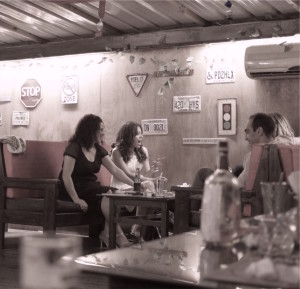 For example, tell customers that they can like your restaurant’s Facebook page to be entered into a drawing for a free gift card or gift certificate. Page likes and other social check-ins can also be linked to discount offers for their next visit. Other contests and giveaway ideas include drink and recipe contests, holiday-themed events, individualized birthday offers and more.
For example, tell customers that they can like your restaurant’s Facebook page to be entered into a drawing for a free gift card or gift certificate. Page likes and other social check-ins can also be linked to discount offers for their next visit. Other contests and giveaway ideas include drink and recipe contests, holiday-themed events, individualized birthday offers and more.
Consider partnering with a third-party provider to manage your loyalty program and ensure a top-notch user experience for your customers. The possibilities are wide-ranging, and you’ll need to do some research to figure out what the best fit is for your restaurant’s team, your POS, and your customer base.
Unfortunately, customers are more likely to post online about a negative experience than a positive one. All restaurants eventually face negative reviews, and ignoring them can have a noticeable impact on your business.
Since communication on social media is a two-way street, most channels will provide business owners with an opportunity to respond to criticism. Remember: your job is not to argue with the review, or tell customers why they are wrong. Instead, answer in a way that acknowledges their bad experience, and commit to improving in the future.
Responding to reviews is most impactful – and easiest – on Yelp. Their public comment function allows business owners to answer reviews directly. Yelp recommends thanking the user for the feedback, responding diplomatically, and clarifying any inaccuracies in the review. This will show customers who visit your Yelp page that you’re devoted to customer service and interested in engaging your patrons. Sometimes Yelp users even update their review to a higher rating based on these interactions.
In other words, responding to negative reviews professionally, positively, and publicly will show visitors that you are interested in engaging your audience and improving your customer experience.
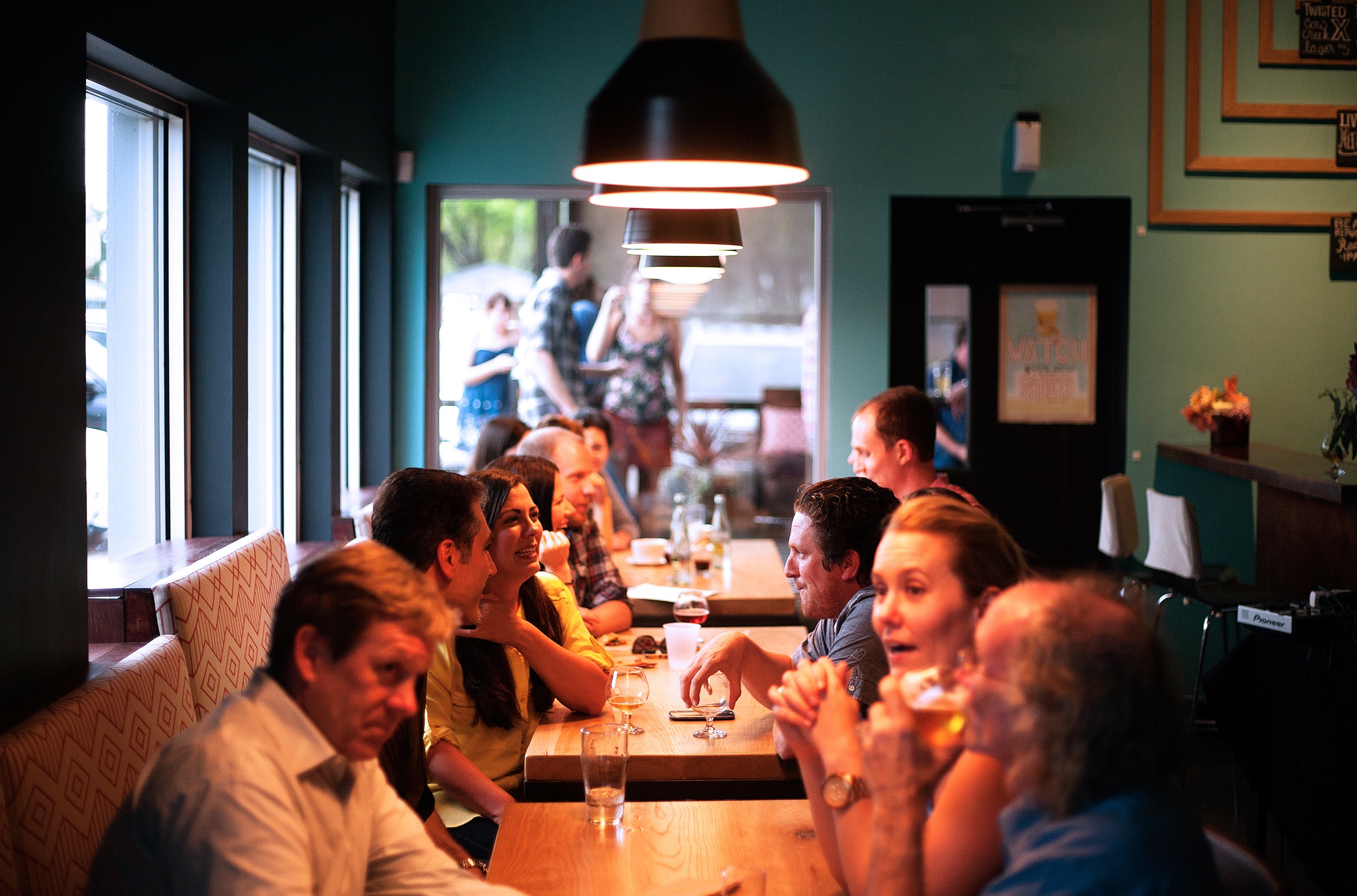
Customers can spread the word about where they are eating through social networks like Facebook, Yelp, Google+ and Twitter, and “check-in” at restaurants via GPS-enabled smartphones.
Restaurant owners and managers can set up discounts, exclusive offers, and other enticements to encourage social check-ins in their restaurants – and they should! We’ve come up with 4 reasons to encourage social check-ins that the restaurant industry can’t afford to ignore.
Connecting through social check-ins can help your restaurant with new customers as well as existing ones. Satisfied guests can review your site on crowd-sourced pages like Yelp, which have become essential to maintaining a good reputation online.
Searches for restaurants through review-based sites are rarely just for research purposes. The majority of searches on these sites lead to an action – users will choose a restaurant that fits their criteria and go there for their next meal.
Your restaurant’s ranking and reviews on these pages will have a significant impact on the searcher’s choice. By maintaining a consistent and positive online presence, which includes receiving good reviews from happy customers, these search results will work in your favor. Also, a strong baseline of positive reviews will offset any negative reviews that may come your way.
Social check-ins can complement an existing customer loyalty program, or even be your basis for starting a new one. Both strategies are useful ways to increase your restaurant’s online visibility, encourage engagement, and improve customer retention.
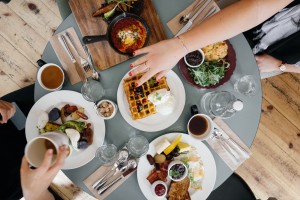 “Any company that has customers checking in regularly is ripe for linking a loyalty program to a location-based service,” Aaron Strout, head of location-based marketing at WCG World, told Inc. “Nearly any business could benefit from combining the power of these two types of loyalty programs.”
“Any company that has customers checking in regularly is ripe for linking a loyalty program to a location-based service,” Aaron Strout, head of location-based marketing at WCG World, told Inc. “Nearly any business could benefit from combining the power of these two types of loyalty programs.”
Combining these two strategies could include offering discounts or specials when a guest checks in for the first time, or loyalty incentives for customers who return to the restaurant and check in over multiple visits.
Tracking and analyzing social check-ins can help to calculate the effectiveness of your social media and marketing campaigns.
Check-in data can help even small and mid-sized establishments identify important factors like guest habits, customer engagement, and trends more accurately. Understanding this information can also help restaurateurs identify their ideal customers and tailor future marketing efforts specifically to them.
Checking in at a restaurant through Facebook includes a post that is visible to that user’s friends. In other words, by posting about their visit to your store, your guests are providing free advertising to a group of people that may not even know your restaurant exists.
 Facebook marketer Jon Loomer points out that the check-in can lead interested users to a deeper level of engagement beyond the initial post.
Facebook marketer Jon Loomer points out that the check-in can lead interested users to a deeper level of engagement beyond the initial post.
Since every Facebook check-in also links to your Facebook page, anyone intrigued by a friend’s post can click through, learn more about your restaurant, and “like” your page.
Social check-ins also reinforce your restaurant’s credibility and authenticity. When potential guests are searching online for a new place to eat, a large number of check-ins and positive reviews will demonstrate the popularity of your location and make it more enticing.
 The Restaurant Technology Guys are honored to announce that we made Zipscene’s Top 20 ‘People We Follow on Twitter’ List!
The Restaurant Technology Guys are honored to announce that we made Zipscene’s Top 20 ‘People We Follow on Twitter’ List!
Zipscene is pretty much THE authority on effective, targeted restaurant marketing nationwide. We are honored that they follow the Guys on Twitter. We certainly learn a lot from Zipscene as well!
Here’s what Zipscene said about us:
@RestTechGuys: Restaurant Tech Guys: Put simply, these guys keep you on the forefront of what restaurants need to embrace in technology (and what they don’t.)
We always strive to provide valuable information to restaurateurs nationwide, from the reasons why they should incorporate certain technologies into their stores (i.e., what will make their lives much easier and their restaurants run more efficiently) to what’s not worth the cost and hassle. We invite you to follow us on Twitter as well, and as always, please let us know how we can help you!
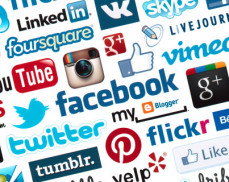
If you haven’t read Part 1 yet, go here.
Picking up where we left off on our 5 tips for getting the most out of social media.
Hopefully you have now identified your primary customer profiles and the social media outlets they use.
Next, you…
This is something that needs to be done whether you opt for social media or not, but it takes on a whole new meaning when it comes to the world of social media. Social media channels allow your brand to have more ‘personality’, as if it were a living, breathing thing. You can be funny or serious, or cater to a certain demographic or interest group. For example, Taco Bell has adopted a loose, shoot-from-the-hip way of doing social media. Compare that to Olive Garden, which is undeniably classic with its “when you’re here, you’re family” picture. Find a social media voice that fits with how people perceive your brand.
You wouldn’t try to build a treehouse without a hammer, would you? Make sure you have the proper tools to do your social media job correctly. Invest in a service like HootSuite, Buffer, or Social Bakers to get you on the right track. By investing in a social media toolkit, you are doing yourself several favors. For one, you can schedule your social media posts. This means when you’re slammed with the 7:30 pm dinner rush, you don’t have to worry about remembering to post tomorrow’s daily specials before your customers unplug for the night. Be sure these social media tools include reporting so you can see what is working and what isn’t. It’s all about guess and check, so why not guess a little smarter?
People are busy. They check into their social media outlets at different times of the day or night. When they are there, you want to make sure you’re there too. Make yourself visible by listing your business on popular apps like Urbanspoon, Yelp, and Google Maps. Time your posts on social media to coincide when people are most active on the site. You can also post at meal times. What better way to get someone in for $2 Margarita Night than by hitting their Facebook feed at 4 pm?
At the end of the day, it’s about building relationships. You want to become a part of your customers’ lives. You want them to be able to scroll through their Twitter feed and laugh at your tweet, or Pin the recipe just posted for killer dumplings, or drool over a picture of one of your famous chocolate sundaes.
Don’t overdo it, though. Don’t post constantly, and don’t post stuff that’s irrelevant or out of the ‘tone’ of your brand. Avoid hot button topics. If you have something to say, say it wisely. Show gratitude when people kindly refer to your brand. If someone has something negative to say, don’t delete the post and don’t retaliate; address the issue with humility and seize the opportunity to improve!
Social media is your friend. Yes, it takes work – and if you’re “old school,” it will surely feel outside your comfort zone. But it also allows you to connect with your customers on a personal level in a day and age when that’s hard to do face to face. Social media gives your brand a fighting chance to rise to the top and be heard amongst all the noise and clatter that surrounds our lives.

Image courtesy of “stockimages”; freedigitalphotos.net
Families are much less “traditional” than they used to be, right? Think back to your favorite episode of Leave it to Beaver.
Inevitably Wally and the Beav walk home from school (such cheerful, polite children, aren’t they?) and open the door to find Mrs. Cleaver happily vacuuming the curtains in her favorite dress and high heels. The kids dutifully finish their homework and run outside to play catch with the baseball while June gets to work in the kitchen. Eventually, Walt comes home in his three-piece suit and is greeted at the door with a tasteful smooch from the Mrs. and the family sits down to a quiet home-cooked supper complete with meat, potatoes, and a tall glass of milk, ready to listen to father’s words of wisdom for the day.
My, have times changed!
Nowadays, families run the gamut. Two-parent homes, single parent homes. Single people, married people, roommates, partners. No children, only children, 5+ children. Two working parents, a stay-at-home-mom, a stay-at-home-dad, or a single parent who works two jobs just to make ends meet. Older parents, younger parents. And the kids are busier than the parents: multiple sports, music lessons, SAT prep classes – you name it. Families are lucky to get a couple of sit-down meals together a week.
Life is a whirlwind these days. People are active, busy, and trying to stay ahead of the game. Community is much more difficult to achieve than in years past. (How many times have you borrowed a cup of sugar from your neighbor?)
As a restaurateur, you have to be willing to adapt to an ever-changing culture and meet your customers where they are in order to stay relevant and succeed. The “olden days” of yellow page ads are gone. Your restaurant is likely facing more competition today than it ever has, so an online presence and interaction on social media venues such as Yelp, Facebook, Pinterest, and Twitter, will help get your restaurant in front of your customers and hopefully be top of mind when the hunger pangs set in.
If you see more Velcro-strapped shoes in your restaurant dining room than anything else, your social media strategy may be an uphill battle. For everyone else, take a good hard look at the demographics of your restaurant. Are they college kids, or families gathering for Sunday brunch? Do you offer a “kids eat free” night? Perhaps your place is a “happy hour” type of place where young professionals come to wind down after work. Once you get an idea of who actually patronizes your restaurant, meet them on their most widely-used social media platforms.
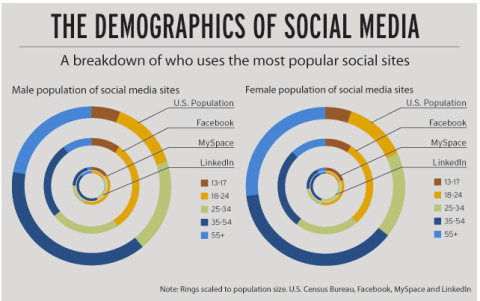
We’re going to stop here and give you some time to mull this over. Determine who your customers are and perform a little research to determine the best social media venues on which to target and engage them.
When you’re ready, check out Part 2!
